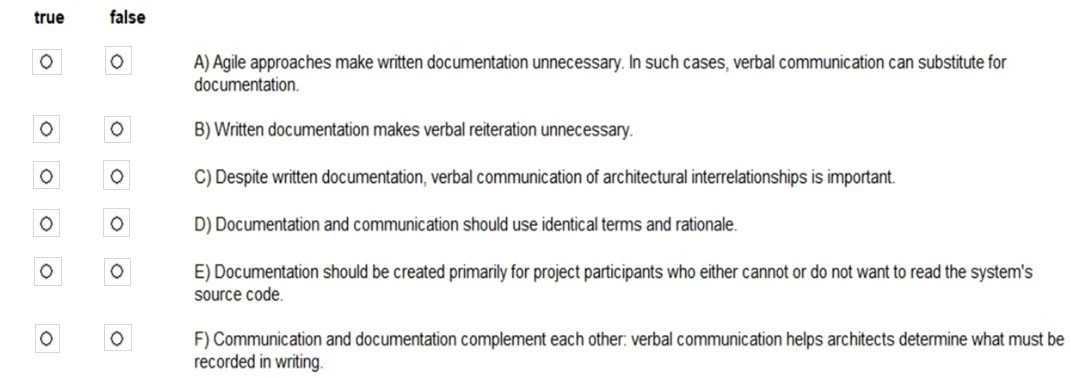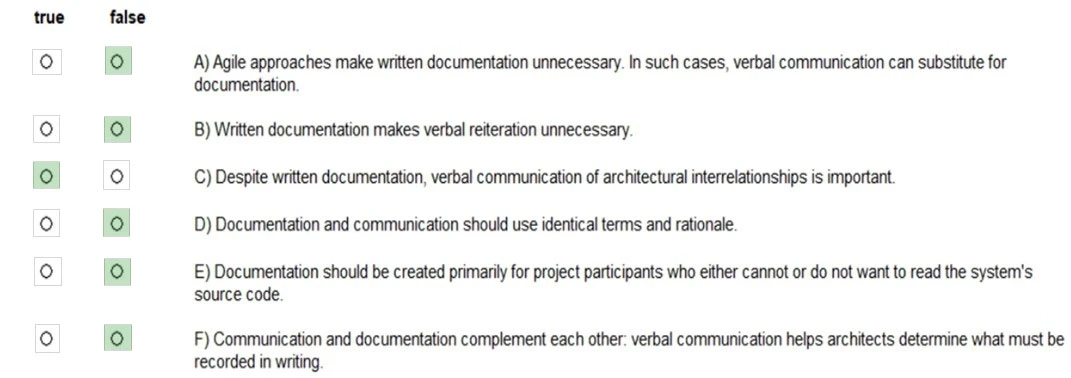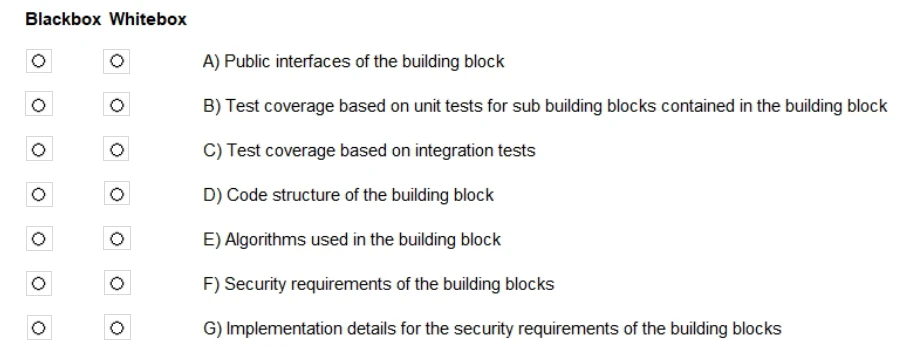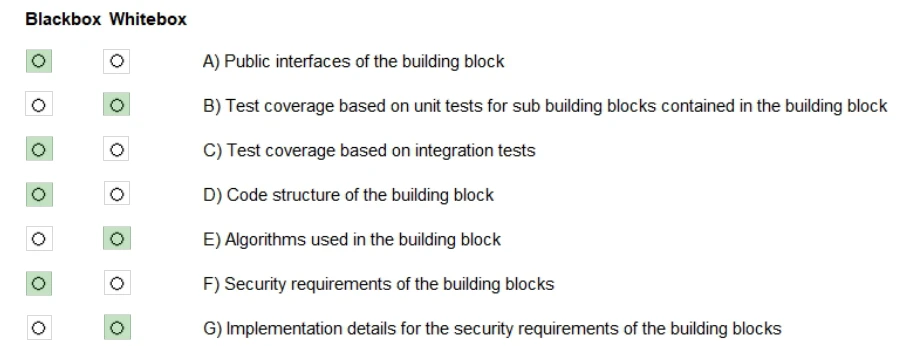How are written documentation and verbal communication of software architectures related? Please mark the following statements as true or false. (Assign all answers.)
Hot Area:



In template-based architecture documentation, it is crucial to describe module structures (white boxes), individual architectural modules and their external interfaces (black boxes), and to use a standardized document structure. Describing module structures helps in understanding the composition and hierarchy within the system. The description of individual architectural modules along with their external interfaces ensures clear communication about the functionality and interaction points of different parts of the system. A standardized document structure helps maintain consistency, readability, and ease of navigation within the documentation.




To illustrate the interaction of runtime building blocks, the techniques most suitable are Activity diagrams, Sequence diagrams, State diagrams, and Flowcharts. Activity diagrams depict the workflow from one activity to another, providing a clear visualization of sequence and conditions for coordination. Sequence diagrams detail how objects operate with one another and in what sequence, making them ideal for dynamic behavior. State diagrams describe the state changes of system entities, showing interactions as transitions between states. Flowcharts are effective in visualizing the sequence of steps and their interactions in the process. Other options such as Class diagrams focus on static structure, and depictions of screen flows, tabular descriptions, and numbered lists do not provide sufficient detail to illustrate interactions dynamically.